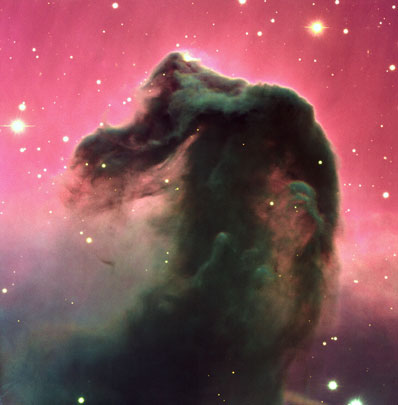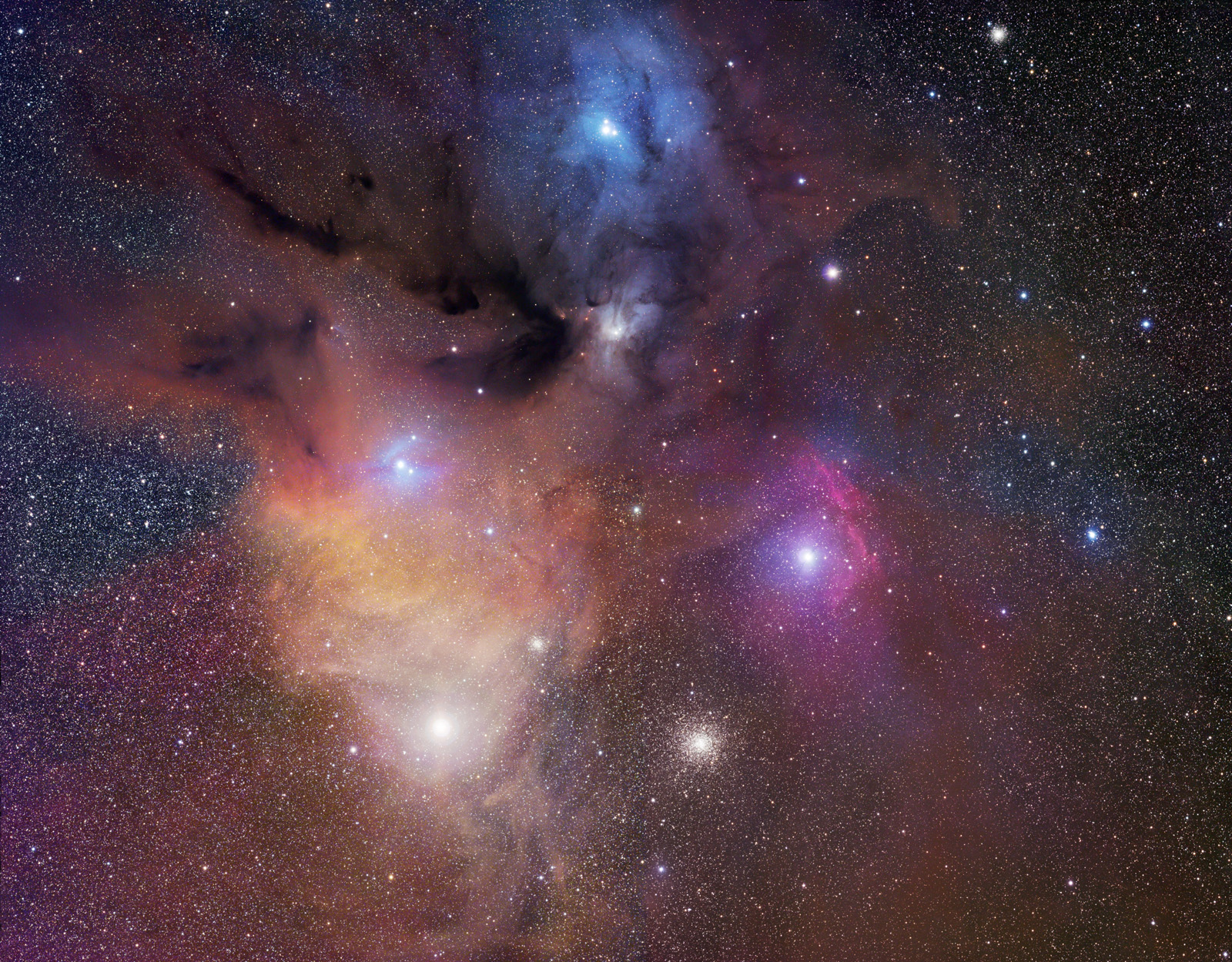What is a nebula?
Let's star with the basics. According to Mirriam-Webster, a nebula,
or nebulae (plural), is any of numerous clouds of gas or dust in
interstellar space. As this definition describes several objects in
space, we must categorize them.
Absorption Nebulae

Horsehead Nebula
|
Also known as Dark Nebulae,
these super dense clouds block out any
light from objects behind them. When looking at a dark nebula, all you
can see if the nebula itself, because the light from all objects like
stars and such are unable to penetrate through these dense nebulae.
Theses clouds are made up of tiny, tiny particles of stellar dust
covered in frozen carbon monoxide and nitrogen, which block light very
effectively. The only way to see past these clouds is by using infrared
technologies or radio waves. |
Emission Nebulae
| Emission nebulae are made up of
a cloud of ionized particles. These
particles generally come from a nearby star emitting photons, or
particles of light. These photons light up the cloud of ionized
particles, making very pretty clouds. Emission nebulae come in several
colors, because different ionization energies give off different
colors. For example, a nebula with a lot of energy will give off a
green or blue color, whereas low energy nebulae will look red. |

Tarantula Nebula
|
Reflection Nebulae

Rho Ophiuchi Complex
|
Reflection nebulae work kind
of like
mirrors. When you stand in front of a mirror and turn on a lamp, the
mirror reflects your image, and the light coming from the lamp.
Reflection nebulae are made up of carbon dust, which has highly
reflective properties. This dust reflects the light coming from
other
stars, so one could say they amplify the light. |


